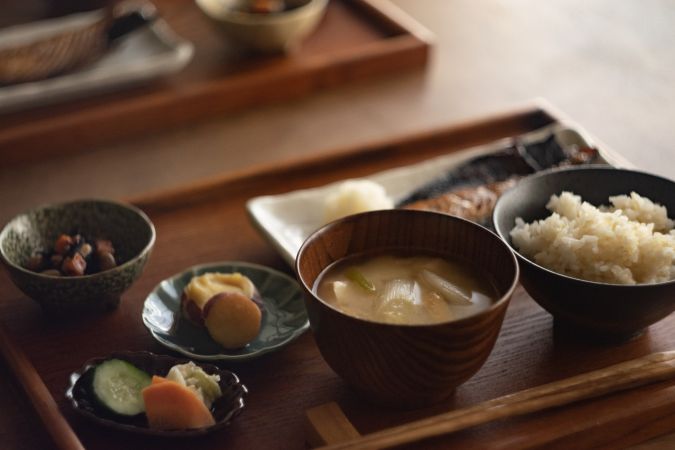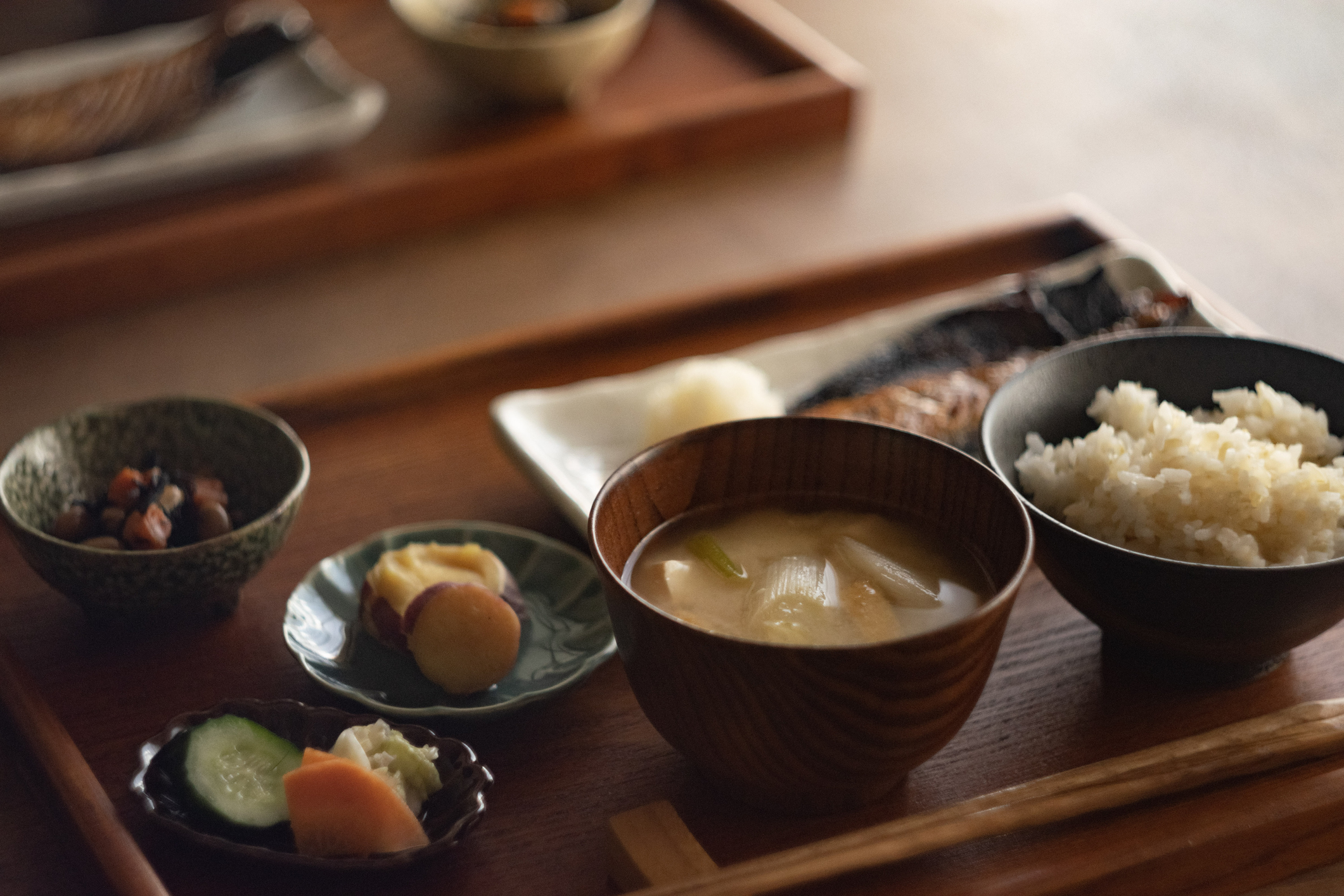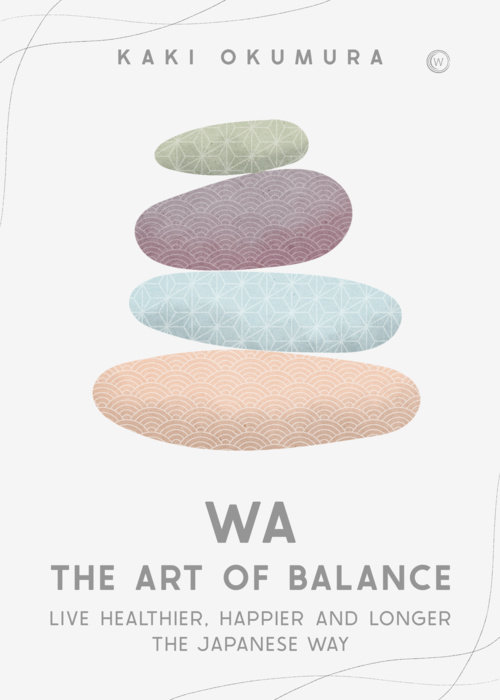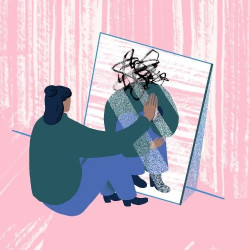
November 10, 2025
How to Lose Weight the Japanese Way
Wa – The Art of Balance by Kaki Okamura
Given Japan’s healthy reputation, it’s surprisingly interesting to hear whether people who moved to Japan have gained or lost weight since arriving.
Experiences seem to go either way. Some people move to Japan and slim down instantly with smaller portion sizes at restaurants, more veggies in their meals, and a greatly improved step count via the power of taking public transit.
Others find themselves lacking vegetarian options and constantly overeating unhealthy foods at restaurants like ramen, curry, and karaage, due to busy work schedules and small kitchens at home.
Kaki Okamura, a Japanese American who grew up and currently lives in New York but attended middle and high school in Japan, lines up all the healthiest parts of Japanese culture for consideration in Wa – The Art of Balance.
But this manual for a healthier lifestyle is quite unlike your typical diet-life-hack approach to nutrition. It’s also a far cry from the “how to ikigai”—style western introductions to Japanese cultural concepts.
Instead, Okamura paints an empowering, holistic picture of health that feels like it could genuinely lead to a happier life. Combining healthy recipes with adorable illustrations, 17 practical lessons and approaches to a balanced lifestyle, and explanations of uniquely Japanese health concepts and terminology, a vision emerges of health that isn’t all rules and regulations.
“I grew up overweight, and every time I went back to Japan, my entire family and extended family was a healthy weight and exercised well,” Okamura says. “When you’re the only overweight person in the family, people don’t share an understanding of what that’s like.”
When Okamura moved to Japan, she took the typical obsessive approach to weight loss: counting calories and calculating the best times to eat. “I did lose a lot of weight,” she says, “but I became very anxious around food. From the inside, I realized that was no way to live.”
But this manual for a healthier lifestyle is quite unlike your typical diet-life-hack approach to nutrition. It’s also a far cry from the “how to ikigai”—style western introductions to Japanese cultural concepts. Instead, Okamura paints an empowering, holistic picture of health that feels like it could genuinely lead to a happier life.
From there, she began developing a healthy lifestyle based on balance. She started a blog just for fun, which attracted considerable attention online. Soon she became a certified nutritional therapist so she could also grasp the scientific perspective of living healthily. The Art of Balance came out of a desire to share the differences between Japanese and American perspectives on health and life, and in the end, it all comes down to the meaning of wa itself—harmony and balance.
“When I describe Japanese culture in the book, it’s really talking about the concept of wa,” Okamura says. “I try to point at different examples of balance being exemplified in Japan, not necessarily painting Japan as always being this way.” Nevertheless, the balanced lifestyle laid out by Okamura in the book is realistic and empowering in many ways, as elements of it are regularly practiced by millions of people around Japan.
Okamura establishes four pillars of health: nourish, move, rest, and socialize. For each of these pillars, she includes four to five lessons. Some lessons are intuitive and practical, like getting exercise based on activities that bring you joy, designing meal portion sizes to follow the classic Japanese rule of hara hachibunme, or “80% full,” and regularly using aisatsu or simple greetings to open up new social interactions and possibilities. Others are counterintuitive and inspiring, like embracing convenience in order to eat healthier or leaning into curiosity to get not just physical but restorative mental relaxation.
While the writing style is mostly subjective, Okamura does work on some hard research and data to back up the advice outlined in the book. The perspective offered on each of these four pillars is exactly what you’d expect from the title: balanced. Reasonable. There are no diets or hard rules about work or sleep or socializing.

For food, Okamura recommends basing your meals around the Japanese principle of ichi-ju sansai (one soup and three sides) and injecting variety into the types of foods you eat in order to make eating healthy, fun and sustainable. For exercise, Okamura proposes injecting movement into your life. That could mean going to the grocery store instead of having groceries delivered. Pursue whatever active habits that bring you joy, even if it’s makko-ho, a simple five-step Japanese stretching routine popular among the elderly.
Resting means finding joy at a slower pace and giving yourself the space to be curious and creative. One of the most interesting ideas explored in the book is the Japanese term kodawari, which on the surface means fastidiousness or fixation. But to Okamura, enjoying kodawari, or exploring and improving a passion or hobby, is an avenue to getting re-energized for work and life.
“Rest gets this image of you lying in bed and doing nothing, but rest is really about increasing your bandwidth for enjoying different things,” she explains. “One way to do that is getting really into something and exploring.”
Okamura says another concept that she wishes she had more space to explore is the book’s final lesson: quiet the ego. This chapter explores the collectivist culture in Japan and how it enabled strong community responses to disasters like the 2011 earthquake and the coronavirus pandemic. “I feel like collectivist culture gets a bad reputation in the U.S., but it was amazing to see how much self-restraint people had in Japan in response to these disasters. People were really looking out for each other,” Okamura says.
Read Wa — The Art of Balance Here
“Doing things for other people, altruism, helps you focus not too much on yourself, and it consequently makes you happier.”
The big-picture approach taken by Okamura does make most of the lessons impossible to simply install into one’s life. Those looking for an easy path to better health in this book won’t find one.
In addition, not all aspects of Japanese culture are healthy, which Okamura acknowledges. Cultures of smoking and drinking, overworking, and rigid beauty standards for women are all dangers to be avoided. Still, Okamura recommends that foreigners living in Japan step out of their comfort zones and try entering more traditional Japanese spaces to pick up some healthy Japanese practices.
“This isn’t comfortable all the time, but it will help you adopt habits that might really have value,” Okamura says. “Go to a local Japanese grocery store, try a traditional izakaya. In the best-case scenario, you can make friends with Japanese people and learn about their stories and values.”
It doesn’t take a particularly Japanese perspective to see that eating high-quality produce, unwinding with the serenity of craftsmanship, and building connections in your community can be a sound path to better health and happiness.
“It’s easy to feel cynical about certain things and why they’re done the way they are,” Okamura says, “but understanding the ‘why’ can go a long way in helping you understand your own values.”
Originally published in March 2023, updated for November 2025.








